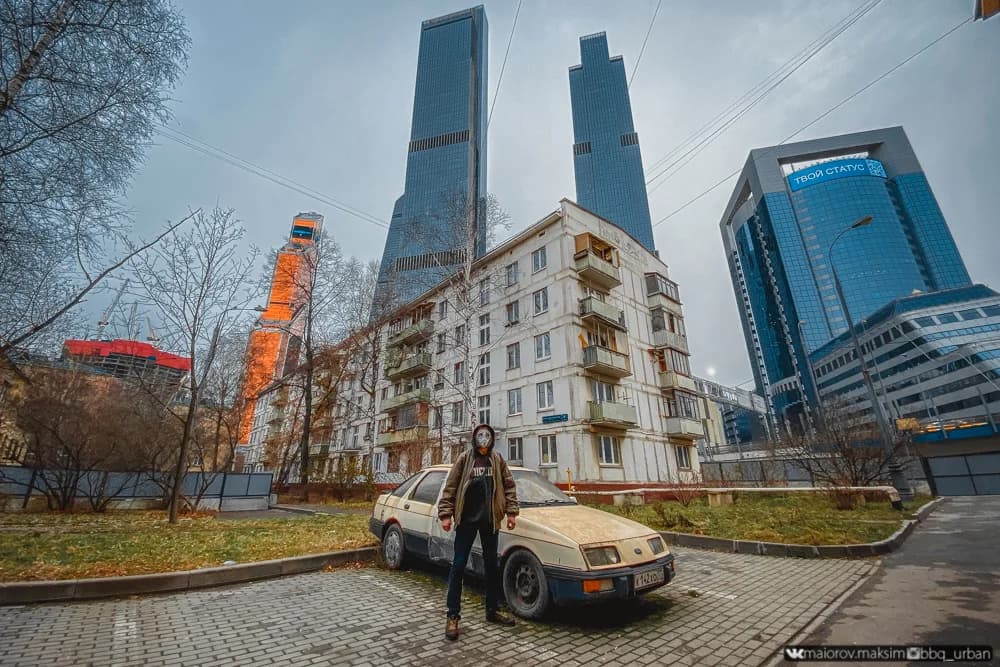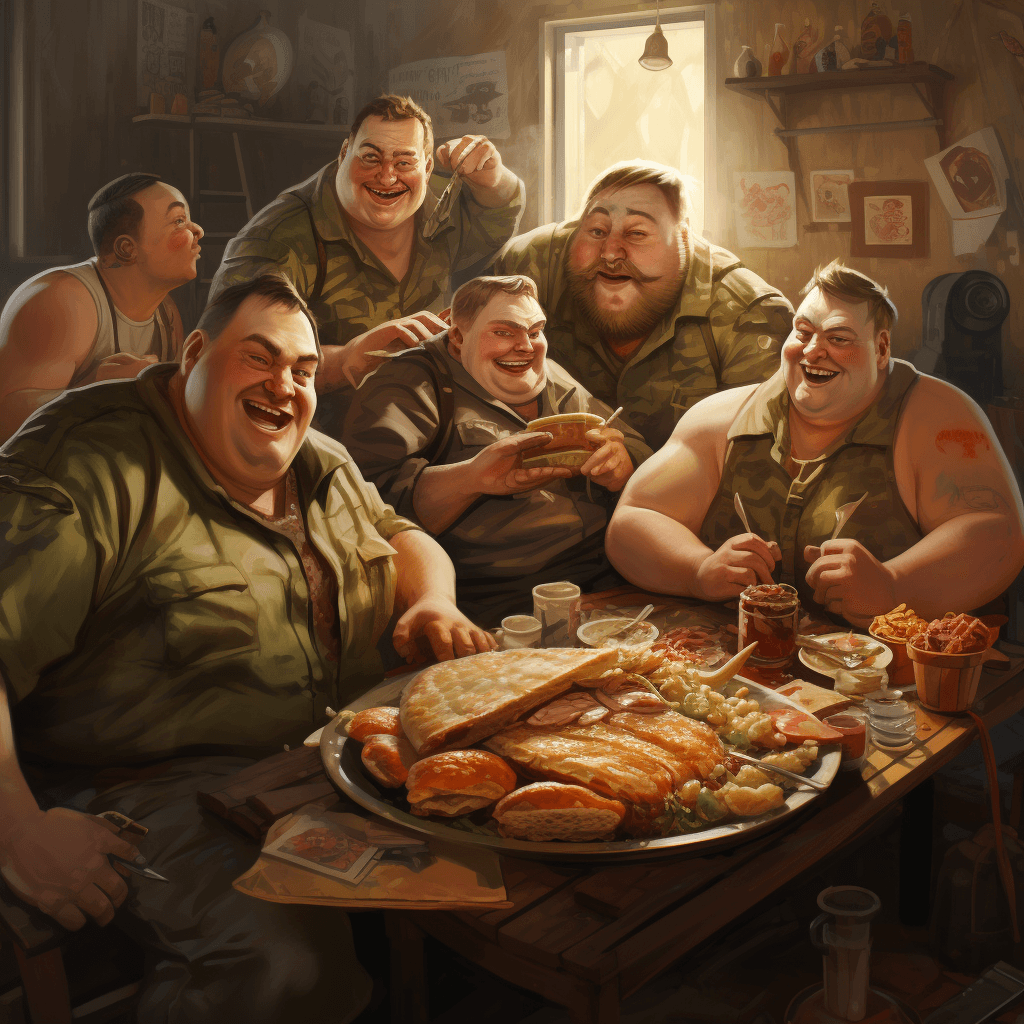How All of Russian TV Became State-Controlled
Short biography of the freedom that never happened.



Spanning from the vibrant city of Moscow, a hub of economic and political activity, to the more remote periphery regions facing isolation and unique challenges, Russia's landscape reveals significant regional disparities. As the largest country globally in terms of territory, Russia exhibits remarkable diversity not only in its vast geography but also in its socio-economic conditions. Some regions flourish with thriving industries and modern infrastructure, while others face stagnation and limited prospects. The story of Russia's regional disparities is multifaceted, prompting a deeper exploration of the factors influencing the nation's uneven development.
The Russian Federation consists of constituent units (republics, oblasts, one autonomous oblast, krais, autonomous okrugs, and federal cities) termed federal subjects (roughly, but not exactly, analogous to states in the USA). Subjects have equal rights in relations with federal government bodies. However, they differ in the degree of autonomy they enjoy; republics are offered more autonomy Since 30 September 2022, according to the official position of the Russian authorities, the Russian Federation has consisted of 89 federal subjects.
However, 6 of these federal subjects are internationally recognized as part of Ukraine:
Today, in terms of the level and depth of regional differences, Russia is significantly ahead of not only developed but also developing countries. The multiplicity of the difference between the maximum and minimum regional per capita product in Russia is more than 25 times, while in the United States or Europe, the regional product per capita differs by territory only by 3–5 times.
The disparity among Russian regions is so pronounced that it has prompted theorising to understand the extent of the differences. The "Four Russias" theory is a conceptual framework proposed by Russian economist-geographer Natalia Zubarevich in 2011, which remains relevant for understanding social phenomena in Russia occurring today, including the attitudes to the war. It suggests that Russia can be divided into four distinct regions based on their socio-economic characteristics and development patterns. These regions are:
This region includes major cities like Moscow, St. Petersburg, and the cities with more than a million inhabitants, where 21% of the Russian population lives. It represents the most developed and prosperous part of the country, with a highly educated population, advanced infrastructure, and a diverse economy. Metropolitan Russia is the centre of political power, finance, and innovation, and it attracts the majority of investments and resources.

Moscow skyline, source: Shutterstock
This region consists of industry towns, with a population of 20 to 250 thousand inhabitants (as well as larger industrial cities such as Togliatti, Cherepovets, etc.), making up 25% of the country's population. It has a strong industrial base, particularly in sectors such as mining, metallurgy, and heavy machinery. Industrial Russia has a relatively skilled workforce and plays a significant role in the country's economy. However, it often faces challenges related to outdated infrastructure, environmental degradation, and a lack of diversification.

The region is made up of residents of villages, towns, and small towns, where 38% of the total population of the country lives. Depopulating small towns and villages with a greatly aged population are scattered throughout the country, but there are especially many of them in Central Russia, in the North-West, in the industrial regions of the Urals and Siberia. Peripheral Russia is characterised by a low population density, limited economic opportunities, and a high level of poverty. It often suffers from infrastructure deficiencies, inadequate social services, and outmigration.

Belomorsk village in the Karelia region, source: Flickr
This region includes the republics of the North Caucasus and southern Siberia (Tyva, Altai) which account for less than 6% of the country's population. The economy of these regions depends on the support of the federal centre.
Let's explore the lives of people, one from the bustling metropolis of Moscow in Metropolitan Russia, and another from the more "Subsidised" region of the Republic of Tyva.
Moscow is a fast-paced and cosmopolitan city full of contrasts. The individual residing here experiences the opportunities and challenges of a major global city. Moscow serves as the political, economic, and cultural centre of Russia, attracting people from various regions and countries seeking better prospects. Some individuals from modest backgrounds arrive in search of better job opportunities, while the city also houses an affluent segment that engages in substantial financial activities. For average civil servants in lower positions, sustaining a livelihood can be challenging.

Life in Moscow, @bbq_urban on Instagram
Despite this, instances of dishonest practices, including theft and corruption facilitated by bribery, are prevalent. Among Moscow's inhabitants, one encounters local residents, including elderly individuals, struggling to save money. And just around the corner, you might see nouveau riche buying expensive jewellery even for their pet dogs. In the subway, there can be unpleasant smells, beggars, and litter. But above ground, you'll see luxurious cars and wealthy, well-dressed people who might not know what's happening below. In the midst of all this, there are everyday people going about their lives.
An average individual in 2022 had a relatively low likelihood of being unemployed, with an official unemployment rate of just 2.2%. However, according to experts the real unemployment rate is approximately twice as big, and the official numbers may not give an objective picture, given the fact that a big proportion of people housed in Moscow are not officially registered. By the end of 2022, as per Rosstat, residents of Moscow were earning an average monthly salary of 113,895 rubles, which is equivalent to approximately 1,140 euros (as of August 2023). However, the median salary based on analysis of data from different recruiting agencies is estimated around 72,820 rubles (~710 euros) or 77,166 rubles (~752 euros).

Life in Moscow, @bbq_urban on Instagram
The housing market in Moscow is characterised by high demand and relatively expensive prices. Accommodation options vary from modern apartments to historical buildings, with prime locations commanding premium rates. The rich modern business centres are just one step away from the overcrowded dystopian ghetto-like districts full of human ant-hills on the periphery. The approximate cost of buying an apartment in Moscow City Centre is 521,495 rubles or ~5,220 euros per square metre. On the other hand, the price per square metre to buy an apartment outside of the city centre is 261,363 rubles or ~2,615 euros.
Moscow offers access to some of Russia's top universities and cultural institutions. The individual can engage in a diverse cultural scene, attending theatres, concerts, museums, and various events. Moscow also boasts a well-developed transportation system, including an extensive metro network, buses, and taxis. The efficient public transit eases commuting around the city's vast expanse.

Life in Moscow, @bbq_urban on Instagram
In the Republic of Tyva, life takes on a different rhythm, characterised by a closer connection to nature and a more rural lifestyle. As a region with certain subsidies and a less developed economy compared to urban centres, the person living in Tyva may face distinct challenges.
In general, the average income for the majority of Tuva residents is barely enough for the necessary set of goods and services. Many people in rural areas lead a more self-sufficient lifestyle, engaging in activities like animal husbandry, farming, and craftsmanship.
Tyva is one of the poorest regions in Russia. The proportion of the population living below the poverty line in Tuva even officially was 34.1%. The economy is predominantly based on agriculture and traditional crafts with an unemployment rate of 7.9% and an average monthly salary of 48,482 rubles (~485 euros) in 2022. According to data from a recruiting agency, the mean monthly salary in 2023 is 72,106 rubles (~703 euros), while the median salary is 34,571 rubles (~337 euros).
Housing options in Tyva are likely to be more modest compared to Moscow, with traditional wooden houses, small apartments, yurts, and rural dwellings being common. In the Republic of Tyva at the end of 2022, the average price per square metre of apartments in the primary housing market was 107,131 rubles (~1070 euros), while in the secondary market, it amounted to 99,936 rubles (~1000 euros). In the structure of the housing stock of the republic, according to the forms of ownership, private housing stock prevailed, the share of which was 93.7 percent. According to data for the year 2023, out of 98,500 households in Tyva, 60,000 have only outdoor or shared toilets, and 509 houses do not have a toilet at all. At the same time:
The transportation infrastructure in Tyva includes buses and shared taxis available, the vast and remote landscape might make transportation more challenging, especially in distant villages.
The Republic is the "leader" among other subjects of the Russian Federation in terms of the number of accidents with victims per 100 thousand inhabitants, as well as the number of crimes per 100 thousand. Most of the crimes are violent. So, for example, in 2020, 6 times more murders were recorded in Tyva than in Moscow, and the overall crime rate roughly corresponds to the situation in South Africa and Brazil.
While Tyva may have fewer educational institutions compared to Moscow, the region emphasises the preservation of its unique cultural heritage and traditions. Traditional practices, including throat singing and shamanic rituals, play an essential role in the local culture.
The regional disparity in Russia can be attributed to a combination of historical, geographical, economic, and political factors. These disparities have deep-rooted causes and have been present for several decades. Some of the key reasons for regional disparities in Russia include:
One of the primary reasons for regional inequalities in Russia is the uneven distribution of natural resources. Some regions are rich in valuable resources like oil, gas, and minerals, while others lack such endowments. For example, The Khanty-Mansi Autonomous Area – Yugra is one of Russia’s strategic regions providing the country’s energy security and is the largest oil-producing region of Russia, which contributes significantly to its economic development.
Regional variations in infrastructure development contribute to socio-economic inequalities. Major cities like Moscow and Saint Petersburg have well-developed transportation networks, modern utilities, and advanced communication systems. In contrast, rural and remote regions often lack such infrastructure, hindering economic growth and access to opportunities. For example, there are still no railways in the following regions:
Investment flows tend to concentrate in major cities and resource-rich regions. Arkhangelsk Oblast, Moscow, Krasnodar and Primorsky Krai, Yamalo-Nenets Autonomous Okrug are regions with the highest level of investment attractiveness. Another 20 regions are in the group with a high level. The middle group included 45 regions. The group with a low level of investment attractiveness includes 15 regions.
Access to quality education varies across regions, impacting human capital development and economic growth. Regional factors of inequality were analysed by researchers from the Institute of Education of the Higher School of Economics Andrey Zakharov and Ksenia Adamovich. Their study concludes that more urbanised regions with higher levels of human capital and GRP are usually characterised by:
Major cities like Moscow and Saint Petersburg have prestigious universities and research institutions, attracting skilled individuals and fostering innovation. On the other hand, regions with limited educational infrastructure face challenges in developing a skilled workforce.
Demographics play a role in regional inequalities. Some regions experience a brain drain, where educated and skilled individuals migrate to major cities or abroad in search of better opportunities, leaving behind an ageing population and a shrinking workforce.
Russia's vast territory and diverse climate pose challenges for economic development in certain regions. Remote and geographically isolated areas face higher transportation costs, limited access to markets, and difficulties in attracting investments.
The historical legacy of centralised economic planning, resource distribution, and neglect of certain regions during different periods in Russian history has left a lasting impact on the current regional disparities. During the Tsarist era, Russia's economic development was concentrated around its major cities and industrial centres, such as Moscow, St. Petersburg, and the Urals. The Soviet era further intensified regional disparities. After the Bolshevik Revolution in 1917, the Soviet government implemented centralised economic planning, where resources and investments were allocated primarily to strategic industries and regions deemed essential for national defence and industrialization. After the collapse of the Soviet Union in 1991, Russia underwent a period of economic transition. The economic disparity between resource-rich regions and other less-developed regions widened.
The quality of life ranking provides valuable insights into various aspects of life helping to understand the relative standard of living and well-being of different regions. In 2022 the Russian regions were ranked based on quality of life by the RIA Rating Agency1. The rating was determined by analysing 67 indicators, categorised into 11 groups that assess various aspects of the region's well-being. These groups cover essential aspects such as:
In the 2022 ranking, the top positions are held by the two biggest cities in the European part of Russia, and the current and former capitals: Moscow with the Moscow Oblast, and Saint Petersburg. Their combined score exceeding 75 out of 100. These regions have consistently held the lead for years, maintaining high scores that remain out of reach for others.
Following closely behind are regions in European Russia (Tatarstan, Krasnodar Krai, Belgorod, Leningrad, Kaliningrad Oblasts, and Samara Oblasts) alongside one region outside Europe (the Khanty-Mansiysk Autonomous Okrug - Yugra), making up the rest of the top ten. The economic foundations of these regions vary significantly. Tatarstan and Yugra's economies revolve around oil production and refinement. Krasnodar Krai and Belgorod Oblast are agricultural hubs, specialising in the cultivation of grains, vegetables, sunflower seeds, and fruits. Meanwhile, Samara and Leningrad Oblasts are renowned for their emphasis on manufacturing and industrial production. Notably, Kaliningrad Oblast, being an exclave surrounded by EU countries, boasts a robust maritime industry, centred around its major seaport in Kaliningrad city. The top ten have seen minimal changes compared to the previous year.
The regions in the top twenty are home to approximately 70.2 million people, constituting 48% of Russia's total population. These areas demonstrate a high level of economic development relative to the Russian medium, accounting for over 60% of the total Gross Regional Product (GRP) of the entire Russian Federation.
The regions occupying the bottom positions in the ranking include regions in Asia (Kurgan Oblasts, Altai) and Caucasus (the Karachay-Cherkess Republic), but also in the European part of Russia (Arkhangelsk Oblast, the Republics of Kalmykia).
The bottom five regions are located on the Southeast periphery (Buryatia, the Zabaykalsky Krai, the Jewish Autonomous Region, and Tyva) and Caucasus (the Republic of Ingushetia). These regions had also found themselves among the bottom ten in the previous year's ranking. The consolidated rating score for all regions in the bottom ten is less than 40, significantly lower than the national average.
Overall, the 2022 rating reflects a continuation of the regional disparities in quality of life and economic development seen in previous years. Moscow, St. Petersburg, and their neighbouring regions remain at the forefront of the nation's prosperity, while several others struggle to catch up and improve their living standards.
Addressing regional disparities in Russia is a complex challenge that requires a comprehensive and long-term approach. Efforts to promote economic diversification, infrastructure development, investment in human capital, and equitable distribution of resources are essential to reducing the gaps between regions and achieving more balanced economic development across the country.
RIA Rating is a universal rating agency of the Rossiya Segodnya media group, specialising in assessing the socio-economic situation of the regions of the Russian Federation, the economic condition of companies, banks, economic sectors, and countries. ↩
Эта статья еще не переведена. Мы ищем волонтеров, которые могли бы помочь нам с этим.
Short biography of the freedom that never happened.

In part 1 we've covered the state position to economy. What is the stand of the public?

Among individuals with left-leaning perspectives, there is often a perception that Russia leans leftward, particularly concerning workers' rights. Is this indeed the case?

Наша медиаплатформа не существовала бы без интернациональной команды волонтеров. Хотите стать одним из них? Вот список открытых на данный момент вакансий:
Если вы хотите помочь нашему проекту, но не нашли интересующей вас вакансии, дайте нам знать:
Мы рассказываем о текущих проблемах России и ее людей, выступаем против войны и за демократию. Мы стремимся сделать наш контент максимально доступным для международной аудитории.
Хотите ли вы поучаствовать в российском проекте, направленном против войны?
More info for media
Мы хотим, чтобы россиян, выступающих за мир и демократию, услышали. Мы публикуем их истории и берем у них интервью в проекте Ask a Russian.
Вы - россиянин или знаете кого-то, кто хотел бы поделиться своей историей? Пожалуйста, напишите нам. Ваш опыт поможет людям понять, как устроена Россия.
Мы можем опубликовать ваш рассказ анонимно.
Наш проект реализуется силами волонтеров - ни один из членов команды не получает никакой оплаты. Однако, у проекта есть текущие расходы: хостинг, домены, подписка на платные онлайн-сервисы (такие как Midjourney или Fillout.com), реклама.
Номер нашего банковского счета, зарегестрированного в Fio Banka (Чехия), 2702660360/2010. Банковский перевод возможно отправить по реквезитам либо отсканировав QR-код в вашем банковском приложении:




Россия начала войну против Украины. Эта война продолжается с 2014 года. Она только обострилась 24 февраля 2022 года. Страдают миллионы украинцев. Виновные в этом должны предстать перед судом за свои преступления.
Российский режим пытается заставить замолчать либеральные голоса. Россияне, настроенные против войны, существуют, и российский режим всеми силами пытается заставить их замолчать. Мы хотим, чтобы их голоса были услышаны.
Сотрудничество имеет решающее значение. Российские либеральные инициативы порой трудно воспринимаются европейской общественностью. Правовой, социальный и исторический контекст России не всегда понятен. Мы хотим поделиться информацией, навести мосты и соединить либеральную Россию с Западом.
Мы верим в диалог, а не в изоляцию. Оппозиционные силы России не смогут ничего изменить без поддержки демократического мира. Мы также считаем, что диалог должен быть двухсторонним.
Выбор за вами. Гнев, вызванный приступлениями России, понятен. Вам решать, хотите ли вы прислушаться к россиянам, выступающим против войны и режима.